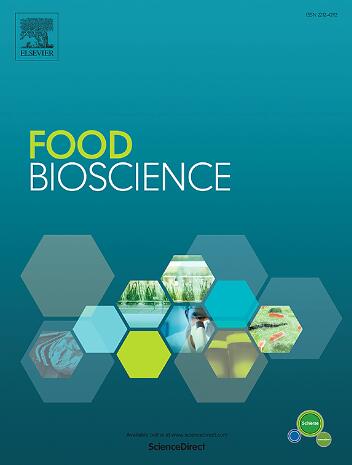The effect of corn starch on the mechanism and printing characteristics of Sa-son seed gum-whey protein
IF 4.8
1区 农林科学
Q1 FOOD SCIENCE & TECHNOLOGY
引用次数: 0
Abstract
Three-dimensional (3D) printing has emerged as a promising technology for the production of tailored food products with specific sensory attributes. This study examines the impact of corn starch (CS) concentrations (6, 7, 8, 9, and 10 g) on the rheological properties, water migration, secondary structure, colourimetric, texture, and microstructure of sason seed gum-whey protein (SSG-WP) gel system. The most suitable gel system for 3D printing, and the influence of printing parameters on the final gel system was investigated. The results demonstrated that increasing CS concentration enhanced the apparent viscosity of the gel. The strength, hardness and chewiness of the gels were significantly affected by SC (P < 0.05), with gel strength rising from 50.03 g to 320.67 g. A colour change was observed, statistically significant differences were found (P < 0.05). Secondary structure of the gel was predominantly composed of β-sheet and β-turn motifs, which together accounted for approximately 60% of the structure. Notably, the proportion of irregular coils gradually increased, and the content of α-helix and β-sheet initially rose before decreasing, which led to an increase in the mechanical properties of the gel. The gel system containing 8 g of CS exhibited the largest peak area for bound and fixed water, as well as a denser, more compact, and smoother microstructure. The printing accuracy and stability for this gel system reached 99.48% and 98.61%, respectively. The optimal 3D printing conditions were found with 8 g CS and 12 g SSG-WP, at print diameter of 0.84 mm, print fill density of 50%, and print speed of 25 mm/s.
求助全文
约1分钟内获得全文
求助全文
来源期刊

Food Bioscience
Biochemistry, Genetics and Molecular Biology-Biochemistry
CiteScore
6.40
自引率
5.80%
发文量
671
审稿时长
27 days
期刊介绍:
Food Bioscience is a peer-reviewed journal that aims to provide a forum for recent developments in the field of bio-related food research. The journal focuses on both fundamental and applied research worldwide, with special attention to ethnic and cultural aspects of food bioresearch.
 求助内容:
求助内容: 应助结果提醒方式:
应助结果提醒方式:


